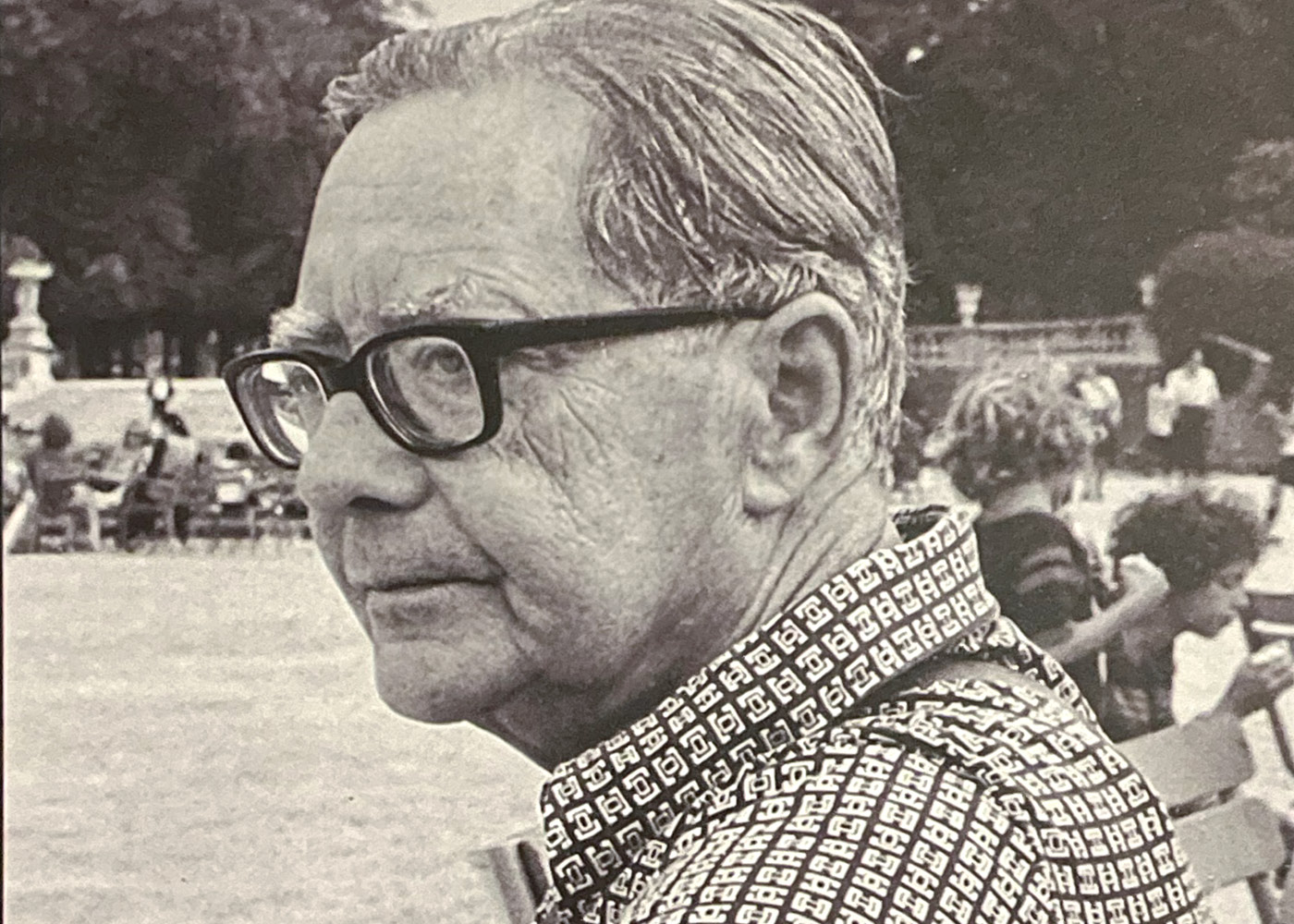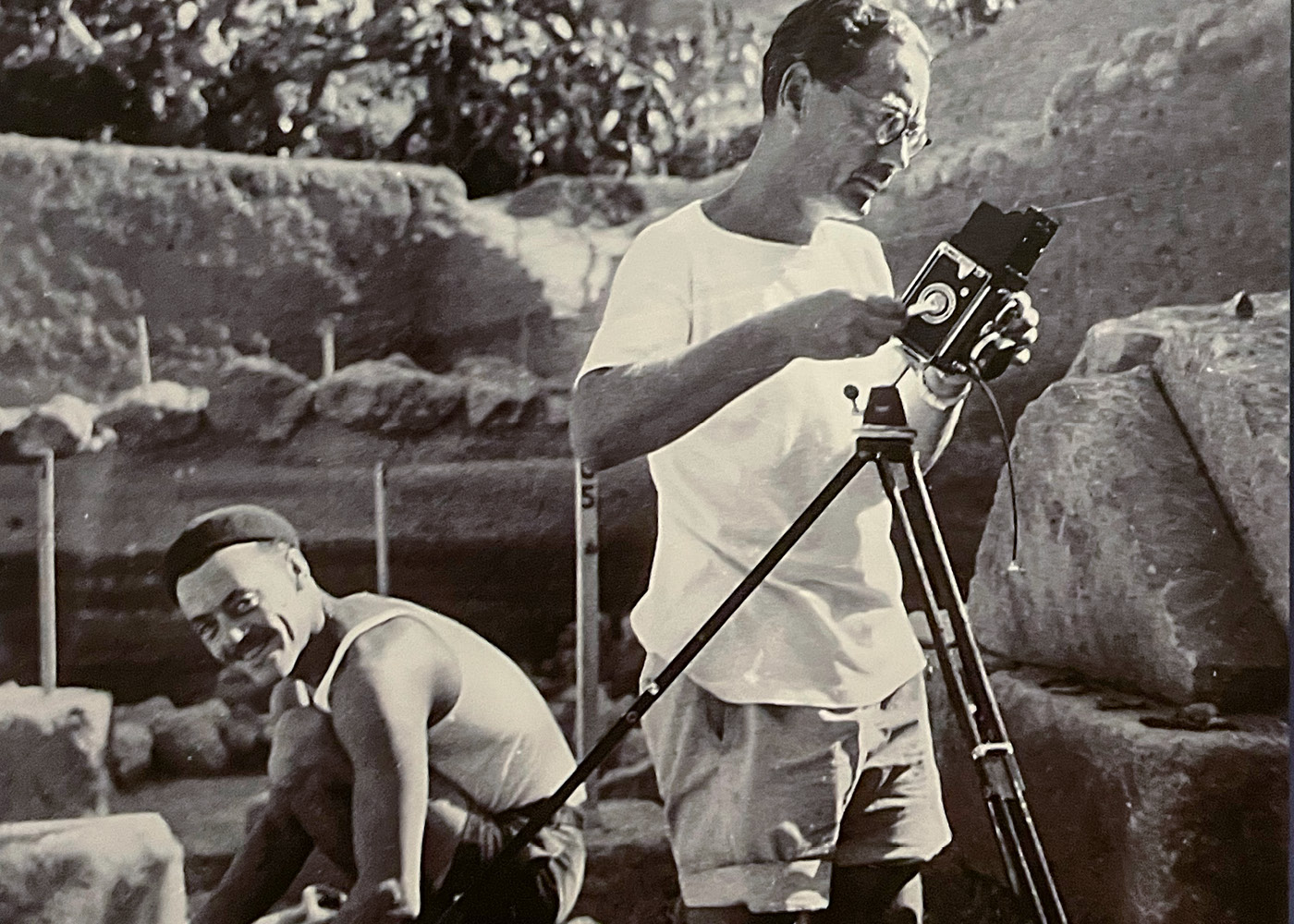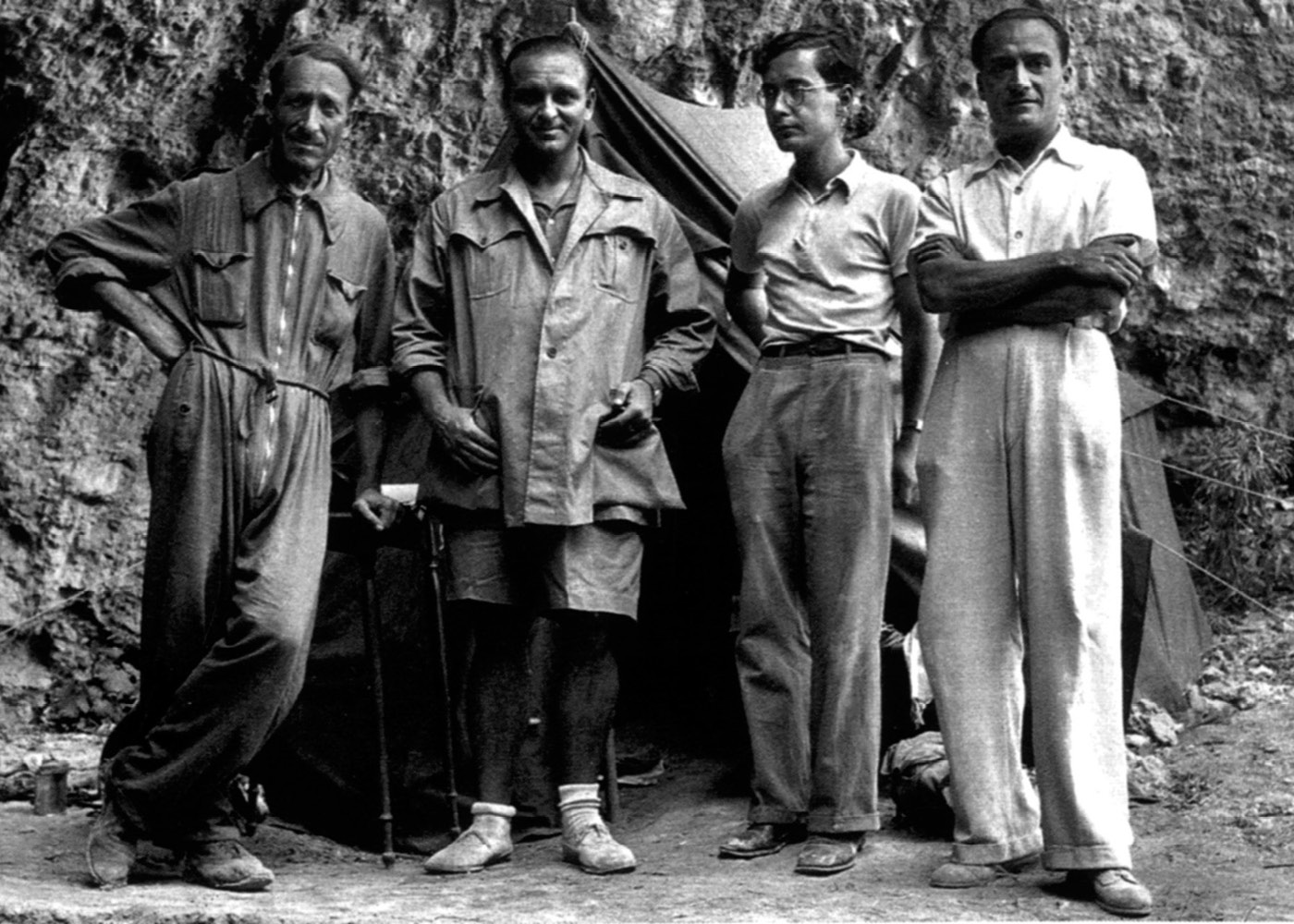
Giorgio Buchner
Life
Giorgio Buchner was born in Munich on 8 August 1914, the son of Paul Buchner (1886-1978), professor emeritus of zoology, an internationally renowned scientist who, together with his Italian wife Massimiliana Coppa, a Venetian painter, fled to Ischia, like many intellectuals of the period, in order to escape from the final throes of the Nazi regime.
Giorgo Buchner grew up in the villa of S. Alessandro, overlooking the main port of the island. Inspired by his wide reading and frequent contacts with intellectuals, he decided to devote himself to archaeology and investigate the history of an island whose archaeological heritage was little-known and which, thanks to his efforts, is now considered to represent the “the dawn of Magna Graecia”.
Buchner graduated in palaeoanthropology in Rome under the supervision of Ugo Rellini: the decision to specialise in palaeoanthropology offers a clear clue as to how, from his youth, he aspired, in contrast to prevailing academic approaches, to pursuing a form of archaeology based not just on the study of classical antiquity and the literary sources but above all on the reconstruction of the landscape and the palaeo-environment. He was fascinated by the study of interactions between human groups and their craft production. In 1947 Buchner entered, as a ‘temporary employee’, the Superintendency of Antiquities and spent his whole career working in this administration until he retired in September 1979 as Deputy Superintendent. However, after his retirement, he received a ministerial appointment to be Honorary Conservator of the island of Ischia.
The excavation of the necropolis in the valley of S. Montano began in 1952, and soon led to the discovery of an exceptional find in the form of ‘Nestor’s Cup’. The excavations were interrupted for the first time in 1965 and for many years Buchner had to seek funding from foreign universities, especially American and Swedish ones, until work resumed in 1977 with state funding and eventually ended in 1982. The archaeological investigations always followed rigorous scientific criteria: the aim of such a rigorous approach was to reconstruct the lives of people through the excavation of their burials in order to understand social relations and cultural behaviour: this objective was achieved not just by employing an accurate methodology but also through the combined use of the natural sciences, in particular, geology, which has now become standard practice in modern archaeology.
Memories
In order to gain an understanding of Giorgio Buchner, it is worth reading the presentation to the writings in his honour in the journal ‘Annali di Archeologia e storia antica’ published by the L’Orientale University of Naples (n. s. 1, 1994):
“There is not a scholar of the classical or ancient Mediterranean world who does not know the name and work of Giorgio Buchner: even considering the extensive nature of his interests, he is, and will remain, chiefly associated with the Euboean settlement of Pithekoussai, and the revolution that this discovery led to in terms of our ideas about Magna Graecia, and as a consequence, Archaic Greece on the one hand and ancient Italy on the other. These are the bare facts: however, the simple recognition of this major scientific achievement, despite its exceptional nature, does not give an adequate idea of the man himself – as becomes clear from the heartfelt words of one of his colleagues who contributed to the volume, C. W. Neeft, in his dedication to his book Protocorinthian Subgeometric Aryballoi (Amsterdam 1987): “To Giorgio Buchner: a meticulous excavator, ever ready to share his discoveries and insights with the world”.
For countless students and scholars these few words evoke wonderful memories of the endless patience and courtesy displayed by the excavator of Pithekoussai to all visitors, even complete strangers, and the pleasure he always took in sharing information and ideas with his colleagues. And his colleagues will readily admit, in all sincerity, that they learned more from him than they ever taught him. Another scholar who worked on this volume – Oswyn Murray – defined him very perceptively as “a man whose modesty and generosity have made him a friend of everyone”. As is well known, modest, generous people rarely receive the tributes they deserve, and only occasionally – and this is the case for Giorgio Buchner – enjoy the attention that comes with such appreciation.
Nevertheless, the editors of this volume found it unthinkable to let Giorgio Buchner’s eightieth birthday pass by without expressing in some form the widely-held admiration, affection and gratitude. But how can the significance of this accomplishment and the importance of the man be properly recognised? We have chosen the form of a thematic Festshrift (writings in honour of a respected person), focusing on a theme which the meticulous excavations of Giorgio Buchner at Pithekoussai have contributed to defining for our generation. The result constitutes the first conscious and commonly agreed attempt to tackle the challenge that the life and work of Giorgio Buchner will continue to pose for a long time. We hope he does not mind, even though we are well aware that once again what he will learn from our efforts does not match what we have learned and continue to learn from him.
(David Ridgway and Bruno d’Agostino)

